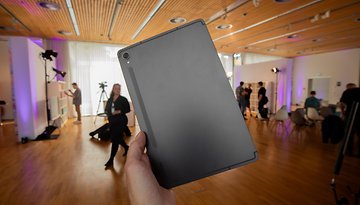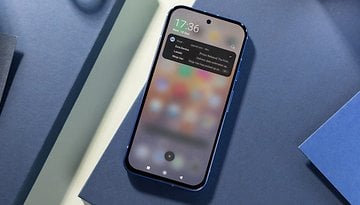Xiaomi Mi 11 vs Xiaomi 12 compared: Is the upgrade worth it?
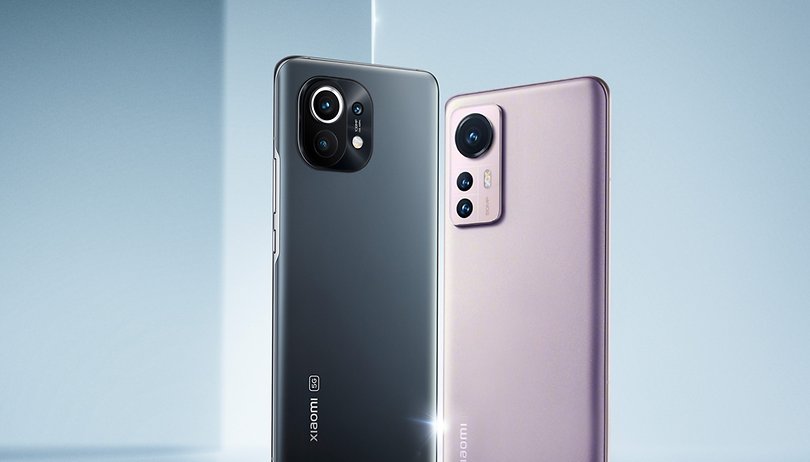

Shortly before the end of the year, Xiaomi was swift to present the Xiaomi 12, Xiaomi 12 Pro, and Xiaomi 12X in China. This means we know the hardware specifications of the new smartphones at the very least and were curious to write a comparison article about last year's offerings compared to the Xiaomi Mi 12 series.
Even though the Xiaomi 12 (Pro) was magically pulled out of a hat at the end of 2021, it still feels like the first flagship smartphone of 2022. The device is already available in China, while the rest of the world continues to wait for the global version (which will probably not be sold in the US). Even so, we want to take a first look at the technical specifications.
Where has Xiaomi improved and implemented new features that were not yet available on the Xiaomi Mi 11 a year back? That's exactly what we'll find out in this article. In this comparison, we do not look at all 11 models that were released last year, but will focus on the duels between the two base models and the Pro variants. For the latter, do bear in mind that Xiaomi does not sell the Mi 11 Pro in many parts of the world, and we cannot say for sure yet which of the new models will make their way to the Western hemisphere.
Before we get down to the nitty-gritty, let's first take a look at the most important hardware specifications in the overview:
| Xiaomi flagships face to face | ||||
|---|---|---|---|---|
| Product name | ||||
| Image |  |
 |
 |
 |
| Display | 6.81 inch flat AMOLED 120 Hz refresh rate 3200 x 1440 pixels |
6.81-inch curved AMOLED 120 Hz refresh rate 3,200 x 1440 pixels |
6.28-inch curved AMOLED 120 Hz refresh rate 2400 x 1080 pixels |
6.73 inch curved AMOLED 1-120 Hz refresh rate 3200 x 1440 pixels |
| Performance | Qualcomm Snapdragon 888 | Snapdragon 8 Gen 1 | ||
| Memory | 128 GB / 256 GB UFS 3.1 8 GB LPDDR5 |
128 GB / 256 GB UFS 3.1 8 GB / 12 GB LPDDR5 |
||
| Camera | Main: 108 MP | f/1.9 Ultra-wide: 13 MP | f/2.4 | 123° Macro: 5 MP | f/2.4 |
Main: 50 MP | f/1.95 Ultra wide-angle: 13 MP | f/2.4 | 123° Tele Macro: 8 MP | 5x zoom |
Main: 50 MP | f/1.9 Ultra-wide: 13 MP | f/2.4 | 123° Macro: 5 MP | f/2.4 |
Main: 50 MP Ultra wide-angle: 50 MP Telephoto: 50 MP |
| Selfie camera | 20 MP | 32 MP | ||
| Connectivity | WiFi 6 | Bluetooth 5.2 | 5G | |||
| NFC | Yes | |||
| Fingerprint sensor | Yes, in display | |||
| Battery | 4,600 mAh | 55 watts charging | 5,000 mAh | 67 watts charging | 4,500 mAh | 67 watts charging | 4,600 mAh | 120 watts charge |
| Pros |
|
|
|
|
| Cons |
|
|||
| Review |
|
|
|
|
| Check offer* |
|
|||
Bear in mind that this comparison will see us focus only on the hardware specifications. Hence, we're comparing the devices as they are on paper, as we haven't had any kind of personal experience with the current Xiaomi 12 generation smartphones
Jump to:
- Models and prices
- Design & Display
- Hardware and performance
- Cameras
- Battery and Quick Charging
- Software and security updates
- Conclusion
Models and prices
Let's begin at the top of the food chain in terms of pricing, and where better to start than with the Pro models? The Xiaomi Mi 11 Pro was launched with a $790 price point (after conversion). At that price point, you would have received the 8GB RAM/128GB storage model in China. For an identical price, Xiaomi now offers the Xiaomi 12 Pro, which is also equipped with 8GB of RAM, but with double the storage.
A cheaper variant with 8GB RAM and 128GB of storage space is also available. This is available for $785. Currently, as in the previous year, the top model is equipped with 12GB RAM as well as 256GB of storage space. Back then, Chinese buyers had to fork out $895 for it, but the price has since dropped due to the arrival of the Xiaomi 12 Pro. This means that buyers of the new Pro model not only get the more powerful and capable smartphone, but will also have to pay less for it.
The situation is rather similar when it comes to the base model. Here, too, there are the three configurations to choose from: 8/128 GB, 8/256 GB, and 12/256 GB. In addition, the prices have also dropped by approximately $50 each. This means that the entry-level model was available last year for the equivalent of $630, while you can already pick up the smallest Xiaomi 12 with a starting price of around $580 thereabouts. The version with 12 GB RAM and 256 GB storage is available for the equivalent of $690.
Design & display
When it comes to the display, it is admirable that Xiaomi seems to be following a "less is more" strategy. Both the regular 11 and 11 Pro models were real clunkers with a screen size of 6.81 inches. The new Xiaomi 12, on the other hand, is almost compact at 6.28 inches, but unlike the other devices in the comparison (all with 1440p resolution), it only offers a FHD+ resolution (1080p). The Xiaomi 12 Pro, at 6.73 inches, is also slightly smaller than the two devices that Xiaomi unveiled in late 2020.
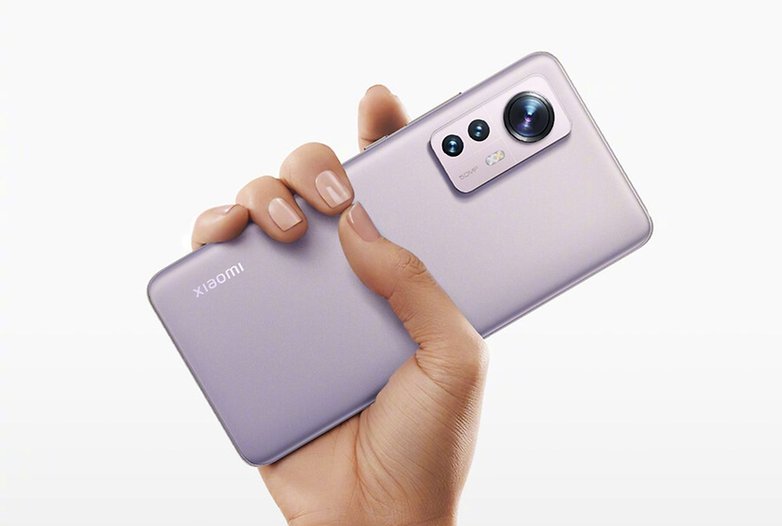
In addition, many things today remind us of last year's models: a curved AMOLED display, fingerprint sensors that have been integrated into the display, a 120 Hz refresh rate, and a 480 Hz sampling rate. But logically, Xiaomi has made sure that they were able to step it up a notch with the display panel as well. Visually, it is noticeable that the punch hole with the selfie cam has moved from the top edge to a central position.
In the Xiaomi 12, you get to enjoy 12-bit color depth, and in the Xiaomi 12 Pro, the company for the very first time uses a display with LTPO technology. This allows more variability in the refresh rate. Through this technology, the refresh rate of 120 hertz can be adjusted down to 1 hertz. This naturally benefits the overall energy efficiency of the device. In addition, one has again been able to crank up the brightness: The Xiaomi 12 is now able to hit up to 1,100 nits, with the Xiaomi 12 Pro maxing out at 1,500 nits.
Hardware and performance
Neither model in the last generation managed to overcome the overheating issues that are commonly associated with Qualcomm's Snapdragon 888 processor. In 2022, the Xiaomi 12 and Xiaomi 12 Pro are the first smartphones to feature Qualcomm's Snapdragon 8 Gen 1.
On a side note, Xiaomi has announced one other smartphone, the Xiaomi 12X, which is almost completely identical to the Xiaomi 12. There is one major difference though - it is powered by a Qualcomm Snapdragon 870 chipset instead, which is largely an overclocked version of 2020's top Snapdragon 865 SoC.
As Qualcomm explained, the new CPU benefits from Samsung's new manufacturing process, which means users can theoretically enjoy up to 20 percent more performance than the Snapdragon 888. Energy consumption is said to be 30 percent lower for the same workload. When it comes to gaming, gamers should be able to enjoy 30 percent better performance than before.
First benchmarks already prove that the Snapdragon 8 Gen 1 clearly leaves its predecessor behind in the dust. However, we should deal with this matter in more detail when we can take a closer look at the new SoC ourselves, apart from all the rather meaningless benchmarks under laboratory conditions. However, we'll share two links to Qualcomm's new SoC generation with you:
- Qualcomm Snapdragon 8 Gen 1 brings a new name to 2022 premium phones
- Snapdragon 8 Gen 1: These smartphones will receive the new SoC first
Cameras
When it comes to cameras, differences between the base and Pro variants are very noticeable. This is true for both the Mi 11 and Mi 11 Pro as well as the Xiaomi 12 and 12 Pro, where all four phones feature triple camera configurations. Again, it's not worth making assumptions until we can test the new sensors ourselves, but let's still take a quick look at the differences that have presented themselves to us so far.

The Xiaomi 12 relies on a 50MP snapper, unlike the 108MP camera in its predecessor. Xiaomi has enlisted the help of Sony's IMX766, which also does its job in top smartphones like the OnePlus 9 Pro and the Oppo Find X3 Pro. The other two shooters - 13 MP ultra-wide and 5 MP macro lenses are largely identical in the two base models. Up front though, the selfie camera has received a resolution increase from 20 MP to 32 MP.
The update on the Xiaomi 12 Pro is more noticeable. Not only are 50 MP sensors now installed everywhere in the main camera, ultra-wide, and telephoto lens. On top of that, Sony's brand new IMX707 sensor is also on board, which is significantly larger than the IMX766 and thus able to capture more light. When it comes to low-light conditions, this should bring about a significant improvement.
Hopefully, we will soon be able to check out the other features that Xiaomi has packed into the new models. One of them is the much-vaunted CyberFocus technology, which ensures that you can focus and take photos at a much faster rate. FollowFocus ensures that the desired subject always remains in focus, even if other people or objects move into the picture before you shoot. Incidentally, this CyberFocus technology is not found in the Xiaomi 12X - one of the few differentiating features of the Xiaomi 12.
Battery and Quick Charging
Has Xiaomi done a worse job with the battery? One might be lulled into thinking so if one were to look at just the capacity of the installed batteries. The Xiaomi 12 has a 4,500 mAh battery instead of the Mi 11's 4,600 mAh battery, while the new Pro model has a 4,600 mAh rating which is 400 mAh less than the Mi 11 Pro. However, we shouldn't forget that the Xiaomi 12 in particular also comes with a far smaller screen, of course, and that the new SoCs are also supposed to be more efficient and less energy-hungry.
In terms of quick-charging, industry leader Xiaomi was able to go one step further compared to the previous year's models: The Xiaomi Mi 11 had 55 watts, now it's jacked to 67. The Xiaomi 12 Pro even went up to 120 watts, as the Mi 11 Pro had to make do with 67 watts. In addition, both can be charged wirelessly at 50 watts, and reverse wireless charging is also possible with 10 watts (both of these scenarios do not apply to the Xiaomi 12X).
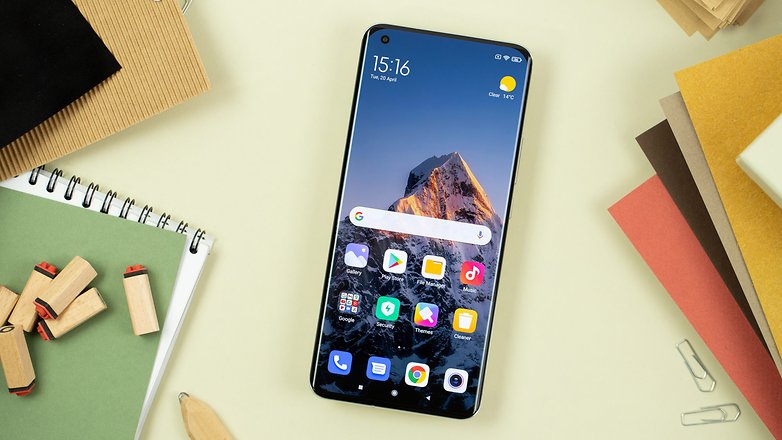
Software and security updates
There's probably very little that can be said about the software in a bare-bones specifications comparison. Last year, both Mi 11 devices received MIUI 12 based on Android 11. Now we're seeing MIUI 13 that is based on Android 12 released on the Xiaomi 12 series. Thanks to MIUI 13, the hardware should not only be able to last longer, but also become more user-friendly and provide better connectivity as well as optimized performance.
Again, only independent tests can show what the new smartphones are actually capable of. There was no new information about the update policy during the Xiaomi 12 launch, so what we already told you in our update article still applies:
- Android versions: Two
- MIUI versions: Four
- Security updates: Three years, patches released every 90 days
Conclusion
Honestly, a conclusion is a bit unfair when it comes to these devices, some of which we only know from the specifications sheet. However, we can see that Xiaomi has optimized its previous year's models at various crucial points: A new software version, new SoC, better camera, faster Quick-Charging capability. Evolution instead of revolution. We're still waiting to see which of the new Xiaomi models will be unleashed on the global market, and of course, we're looking to score review units when they are available.
So for now, take this spec comparison as an initial indication of what has happened to Xiaomi's flagship lineup in twelve months. We'll get down to the nitty-gritty when we can put Xiaomi 12 and Xiaomi 12 Pro through the paces in our in-depth reviews.
Until then, you can tell us whether you think that Xiaomi is well positioned for the year 2022 with these new devices, or whether you had hoped for more in the comments section.






